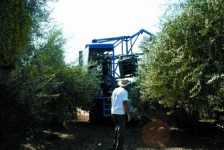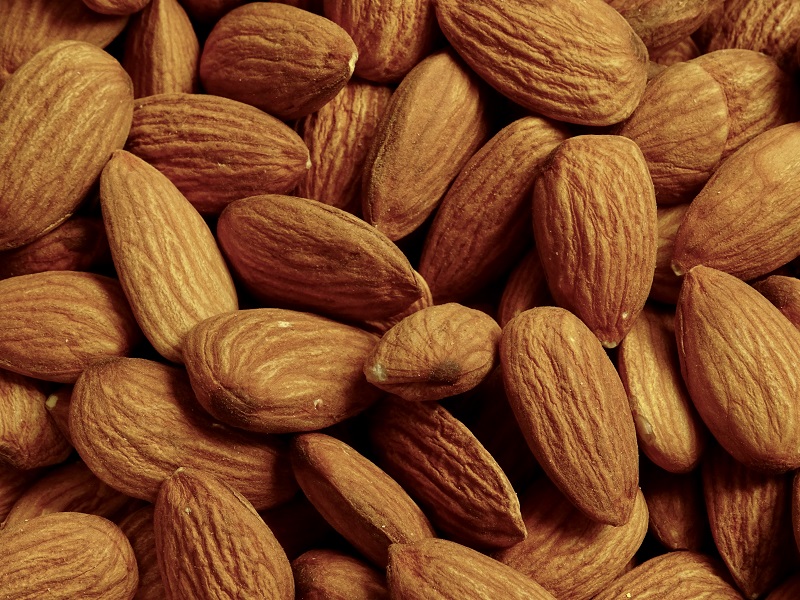Mechanizing Olive Harvesting

Table olive growers spend more than half their gross returns per ton on the cost of hand harvest labor, which is driving many out of the business. However, the U.S. is still the single largest table olive market in the world, giving California growers a marketing advantage with the primary Manzanillo cultivar. With shortages in adequate harvest labor and challenges in meeting safe and fair employment standards, mechanizing harvest is crucial.
Louise Ferguson, a plant sciences Extension specialist at the University of California-Davis, and a team of scientists, are working to develop mechanical harvest methods to improve the difficult task of harvesting table olives. To date, the team has developed two methods: trunk shaking and canopy contact heads, both of which Ferguson says produce acceptable olives with about 65% harvesting efficiency. Ferguson says she thinks viable, commercially available machines could be ready in two years. Machines will most likely be contract harvesters, as few table olive growers are big enough to purchase one.
In the process of developing mechanical olive harvesters, the team of experts first determined the picking method, then the machine that transports it, and the catching mechanism, guided by agricultural engineer Uriel Rosa of Spain. All aspects of development are underway simultaneously, Ferguson says.
“These include conducting field trials of the harvester and evaluating efficiency — how much is in the bin and on the ground, doing the economics of that, evaluating harvester speed and time to harvest, the effect on fresh and processed fruit quality, and trying to develop the machine and any compound that will improve fruit quality, while keeping it all in front of the industry for continued education and support,” says Ferguson.
She adds that the group has continued to have strong support from the California Olive Committee, the industry research funding body.
Harvesting Challenges
When and how table olives are harvested are among the most important factors in quantity and quality. Maturity, size, and fruit condition, in addition to efficiency of harvest and the percentage of fruit removed from the tree, contribute most to the total processed value of the crop. Ultimately, however, reducing the cost of olive harvest does not offer growers an advantage if harvested olives cannot be successfully processed into high-quality table olives, says Ferguson.
“Mechanizing the harvest of table olives presents some unique challenges,” she says. “The tree canopy and trunk must be adapted to the interface with the harvester, avoiding damage to the tree, and the fruit must be collected with minimum bruising.”
The two viable technologies being evaluated — contact harvesting heads and trunk shakers — have the same final harvest efficiency (58% to 64%), yet the mechanism of fruit removal is different. The two machines harvest different parts of the canopy more efficiently, and the potential for tree damage is different, yet the final fruit quality is remarkably similar.
Both a trained sensory panel and a consumer panel drawn from the public could not distinguish mechanically harvested from hand-harvested olives, supporting the research conclusion that mechanical harvesting does not decrease processed table olive quality.
The Next Steps
The new super-high-density olive oil orchards being developed in Argentina, Spain, Tunisia, and California were all developed as orchards that could be harvested with existing mechanical harvesters. Early research on table olive harvesting suggested that high-density hedgerow orchards could improve the efficiency of both mechanical harvesters, according to Ferguson.
The next step will be to determine if the mechanical harvesters will have higher final efficiencies in high-density hedgerow orchards or in conventional orchards that have been topped, hedged, and skirted to produce a modified hedgerow.
“We also hope to determine the field operating parameters of ground speed, hectares per hour, tons per hour, and cost per ton and per hour to harvest the olives,” Ferguson says. “The final project goal is an online interactive harvest calculator, which will allow growers to enter their orchard parameters to determine if hand harvest or machine harvest produces a better net return.”
For updates on the continued research, visit http://groups.ucanr.org/olive_harvest/index.cfm.









